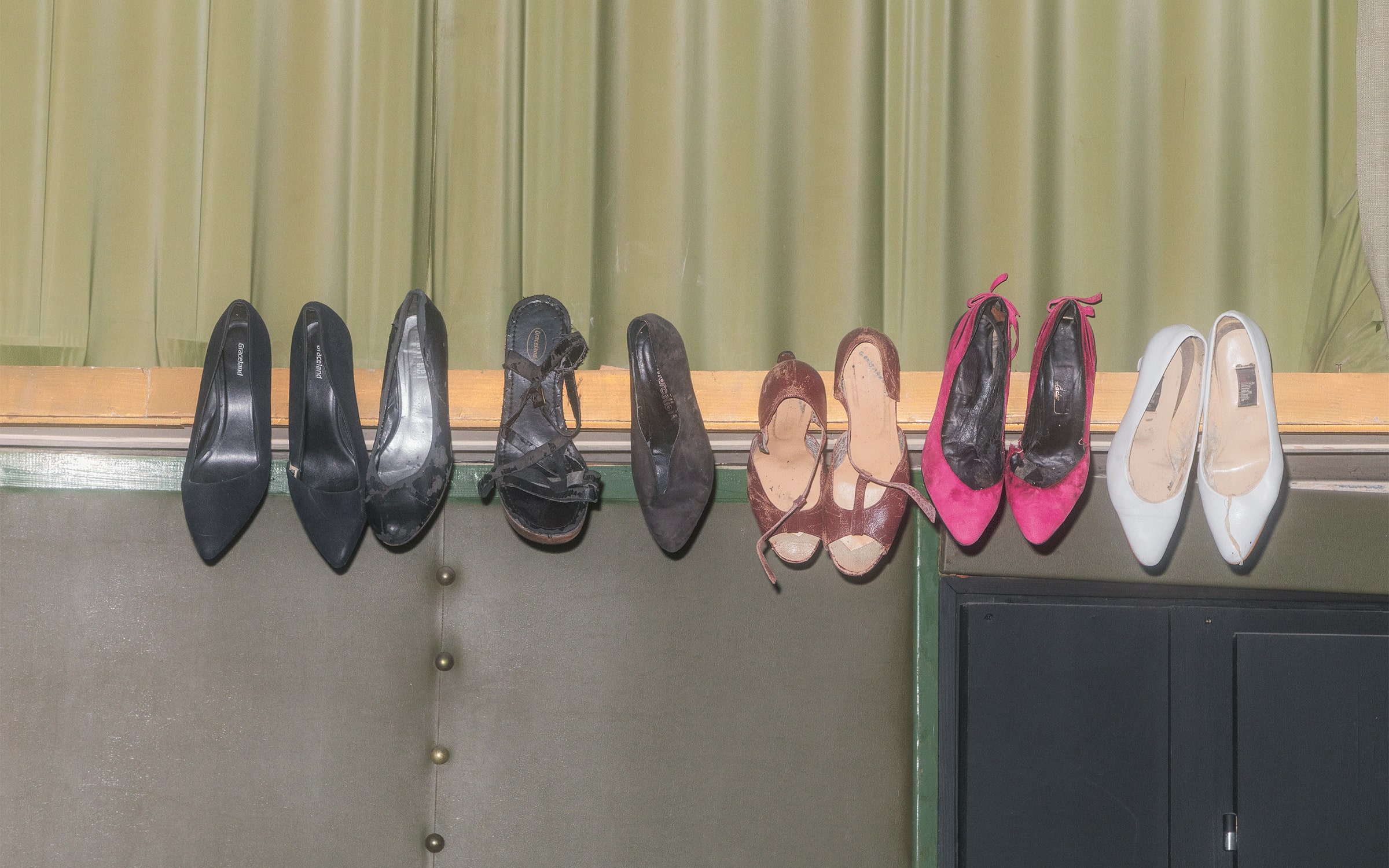‘When I was a child, my brother used to dance, before eventually pursuing a career as a magistrate. My family loved art, cinema, and German culture because my mother was a German teacher. She was also cultural deputy to the mayor of Chambéry. My parents were union activists. Dancing wasn’t at the core of my education, but the very fact that it was possible for a boy to study dance, was remarkable – and still is today. I always loved school. When I learned you could go to the ENA [École Nationale d’Administration] and the Polytechnique simultaneously, I wanted to give up dancing! But meeting the teacher, Jean-Luc Chirpaz, a former dancer with the Paris Opera, was decisive: he took me, aged 12, to the Conservatoire in Grenoble, then I went to the Paris Opera dance school. If I had to do it all over again, I would, even though it was hard being far from my family, and having a modern dance rather than ballet background.


‘In the early 1990s, artists wanted to move away from signing their work and position themselves on a more conceptual level. My aesthetic is chaotic, and scrappy, with a clear interest in experimentation. I love the multiple mental spaces of dance, which allow me to experience different emotions and sensations. Dance was my way into life, to reading, to speaking… At a time of climate anxiety and war, dance acts like a membrane sensitive to what is around us. Besides, you can dance on the stage, in the street, on the phone, with a partner, in clubs…
‘When I studied art history, I wanted to look into what constitutes memory in dance, and how to write the history of dance. My questions about the visual arts, music, and politics are rooted in my experience as a dancer. This has brought several artists and thinkers to dance. I began by inventing a Museum of Dance (at the Centre chorégraphique national de Rennes et de Bretagne). We looked for buildings: a Soviet memorial in Berlin, an art school in Avignon… And then, after much searching, I decided best would be to have no walls or rooves, but be defined simply by our activity. This is what lead me to create Terrain, the organization that develops my projects in France.
‘Dance can occur anywhere, first and foremost in our heads, and be completely nomadic. To dance, I don’t need a barre, tights, or a studio, I need to live. And if I’m dead, the body continues to dance, it decomposes. If it burns, it turns into carbon and feeds trees...The belief that it’s possible to dance anywhere has led me to extraordinary places: most recently to Gottfried Böhm’s Brutalist Church of the Pilgrimage in Neviges, Germany, where we created Liberté Cathédrale with dancers from Terrain and the Tanztheater Wuppertal Pina Bausch, for which I’ve served as artistic director since August 2022. We have a genuine Franco-German cooperation. And in Wuppertal, I work in Pina Bausch’s former studio. I’m happy to have this kind of life.


‘The exhibition at Frac Sud in Marseille is an image of my work in film-artworks. It’s closely linked to the vision of the Frac Sud director, Muriel Enjalran. We met in Hauts-de-France – she was interested in workers’ photography and I was working in Valenciennes. She wanted to curate an exhibition of the films we’ve produced over the years. It is not a retrospective, but many aspects of my work are in there. Some of the films are silent, whereas my working environment is often filled with noise. Three new films will be shown for the first time: TRANSEPT, based on my solo SOMNOLE, shot at the Église Saint Eustache in Paris; étrangler le temps, shot at night at the Grand Palais with Emmanuelle Huynh; and a film made with Marion Barbeau, who was the heroine of Cédric Klapisch’s En Corps, dancing alone under the night sky in the grass adjacent to the Centre Pompidou-Metz. The title of this film is also that of the exhibition: “Danse gâchée dans l’herbe”.
‘Sharing my knowledge of dance has always been an important aspect of my practice. I’ve been lucky enough to work with Steve Paxton, Anne Teresa De Keersmaeker, William Forsythe, Simone Forti, Yvonne Rainer… Working with the Compagnie de l’Oiseau-Mouche in Roubaix, with disabled actors, transformed me. I created the École Éphémère Bocal, which is an art project in its own right, exploring the frightening continent of pedagogy! I’ve never thought of transmission as something separate from creativity. Even when I created SOMNOLE on my own during lockdown, I was inhabited...You’re never alone, for better or for worse!’

‘Danses gâchées dans l’herbe’
From December 9, 2023 until March 24, 2024
Frac Sud, Marseille
Anaël Pigeat is an art critic, editor-at-large of The Art Newspaper, journalist for Paris Match, and curator.
All photos and videos by Neven Allgeier for Art Basel.
English translation: Art Basel.
Published on November 30, 2023.